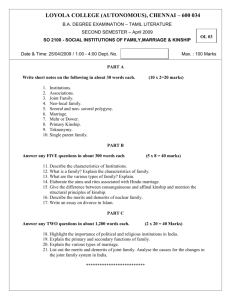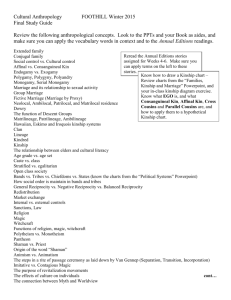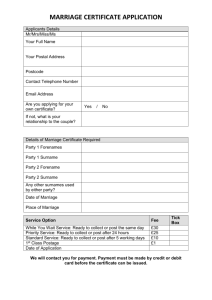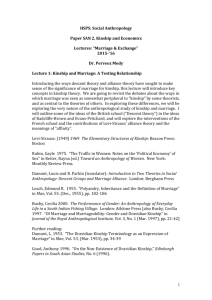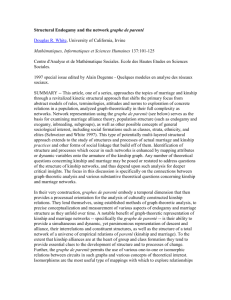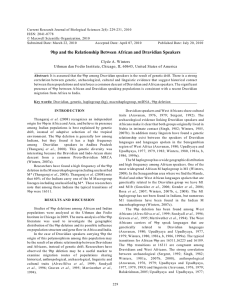KINSHIP SYSTEMS: LANGUAGE AND GENES
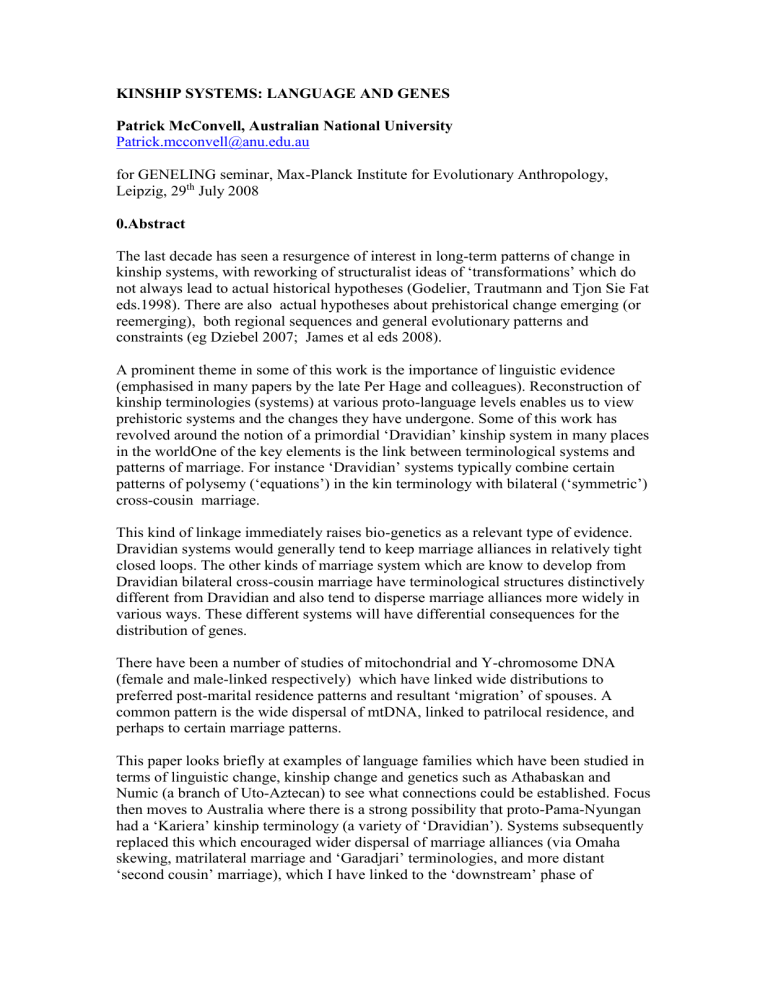
KINSHIP SYSTEMS: LANGUAGE AND GENES
Patrick McConvell, Australian National University
Patrick.mcconvell@anu.edu.au
for GENELING seminar, Max-Planck Institute for Evolutionary Anthropology,
Leipzig, 29 th
July 2008
0.Abstract
The last decade has seen a resurgence of interest in long-term patterns of change in kinship systems, with reworking of structuralist ideas of ‘transformations’ which do not always lead to actual historical hypotheses (Godelier, Trautmann and Tjon Sie Fat eds.1998). There are also actual hypotheses about prehistorical change emerging (or reemerging), both regional sequences and general evolutionary patterns and constraints (eg Dziebel 2007; James et al eds 2008).
A prominent theme in some of this work is the importance of linguistic evidence
(emphasised in many papers by the late Per Hage and colleagues). Reconstruction of kinship terminologies (systems) at various proto-language levels enables us to view prehistoric systems and the changes they have undergone. Some of this work has revolved around the notion of a primordial ‘Dravidian’ kinship system in many places in the worldOne of the key elements is the link between terminological systems and patterns of marriage. For instance ‘Dravidian’ systems typically combine certain patterns of polysemy (‘equations’) in the kin terminology with bilateral (‘symmetric’) cross-cousin marriage.
This kind of linkage immediately raises bio-genetics as a relevant type of evidence.
Dravidian systems would generally tend to keep marriage alliances in relatively tight closed loops. The other kinds of marriage system which are know to develop from
Dravidian bilateral cross-cousin marriage have terminological structures distinctively different from Dravidian and also tend to disperse marriage alliances more widely in various ways. These different systems will have differential consequences for the distribution of genes.
There have been a number of studies of mitochondrial and Y-chromosome DNA
(female and male-linked respectively) which have linked wide distributions to preferred post-marital residence patterns and resultant ‘migration’ of spouses. A common pattern is the wide dispersal of mtDNA, linked to patrilocal residence, and perhaps to certain marriage patterns.
This paper looks briefly at examples of language families which have been studied in terms of linguistic change, kinship change and genetics such as Athabaskan and
Numic (a branch of Uto-Aztecan) to see what connections could be established. Focus then moves to Australia where there is a strong possibility that proto-Pama-Nyungan had a ‘Kariera’ kinship terminology (a variety of ‘Dravidian’). Systems subsequently replaced this which encouraged wider dispersal of marriage alliances (via Omaha skewing, matrilateral marriage and ‘Garadjari’ terminologies, and more distant
‘second cousin’ marriage), which I have linked to the ‘downstream’ phase of
language spread (McConvell 1997, McConvell and Alpher 2003). Questions are raised about what kind of genetic signatures such changes may leave.

